Lisa Brothers Arbisser, MD
NUMBER OF YEARS IN PRACTICE: 46
NUMBER OF YEARS IN A MENTORSHIP ROLE: 40
WHO WAS YOUR MENTOR?

I have been blessed with many mentors. My parents lovingly taught me to analyze and synthesize information and, critically, to respect myself. My husband, Amir Arbisser, MD, is a pediatric ophthalmologist and a business strategist. He has shown me how ethical behavior floats all boats and how love—even for patients—can be unconditional.
Frederick Blodi, MD, promoted broad exposure and competence across all ophthalmic specialties and helped teach me how to tackle the toughest problems, serve patients, and respect ocular tissue.
Randall J. Olson, MD, recognized my worth as a surgeon and teacher and opened the door of opportunity to me. Robert H. Osher, MD, modeled for me the joy of quality teaching. Howard V. Gimbel, MD, MPH, FRCSC, demonstrated the innovation, precision, and ethical standards that I wished to attain as a cataract surgeon (Figure 1). Steve Charles, MD, taught me never to stop seeking knowledge. Rupert Menapace, MD, FEBO, inspired my passion to manage the posterior capsule and study its role in quality outcomes. (Editor’s note: Dr. Osher is featured as one of CRST’s Mentors’ Mentors. Read his answers later in this article.)
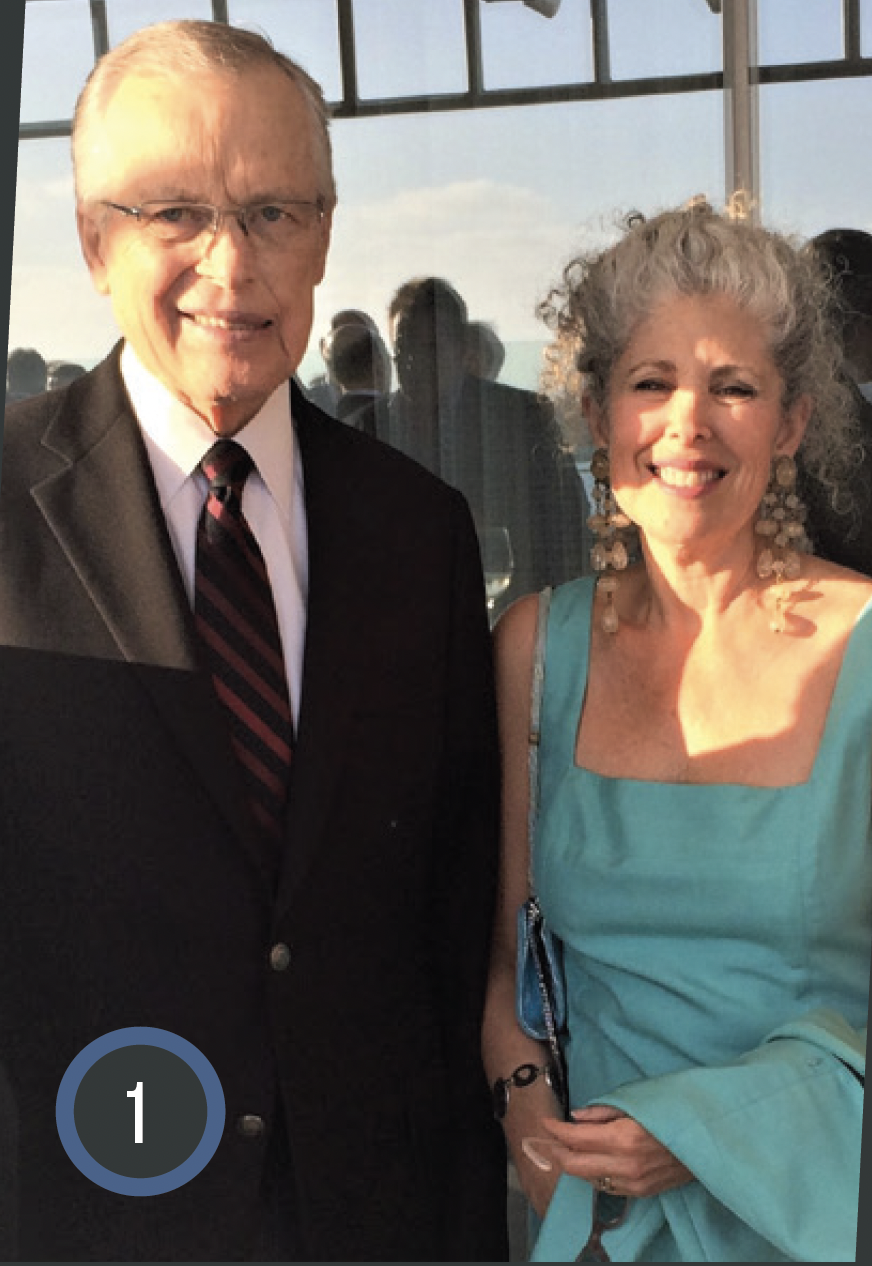
Figure 1. Dr. Arbisser with Howard V. Gimbel, MD, MPH, FRCSC.
There were many knowledgeable members of industry who facilitated my ability to explore new ideas with deeper understanding, including Henry Mitchell and Doug Fanny. I firmly believe that industry and clinicians must come together and partner in the delivery of care to patients.
I am sincerely thankful for this honor and to all those, named and unnamed, who have enriched my professional and personal lives.
WHAT IS YOUR MENTORSHIP PHILOSOPHY?
In addition to teaching, I think mentorship should include modeling the behavior that leads to the best outcomes. In ophthalmology, this can be as specific as coaching someone on a surgical technique or as broad as modeling a way of life. The exchange of information, including scientific and philosophical discussion, is integral to mentorship.
WHAT IS A FAVORITE MEMORY YOU SHARED WITH A MENTEE?
In the early 1990s, I was fortunate to help Arun Sethi, MD, and Reena Sethi, MD, jumpstart Dr. Sethi’s Eye Centre in Delhi, India. This institution provides direct and indirect assistance to the needy (Figure 2).

Figure 2. Dr. Arbisser with Reena Sethi, MD.
If I have helped others gain confidence, knowledge, and a mission as ophthalmologists and people, I have helped patients obtain better outcomes. Anyone for whom I have been considered a mentor has given me as much as or more than I have been able to give them. I’ve been privileged to influence some of our best-recognized young teachers today, including Cathleen M. McCabe, MD (Figure 3); Michael E. Snyder, MD; Steven Safran, MD; Thomas Oetting, MD; and Nicole R. Fram, MD.
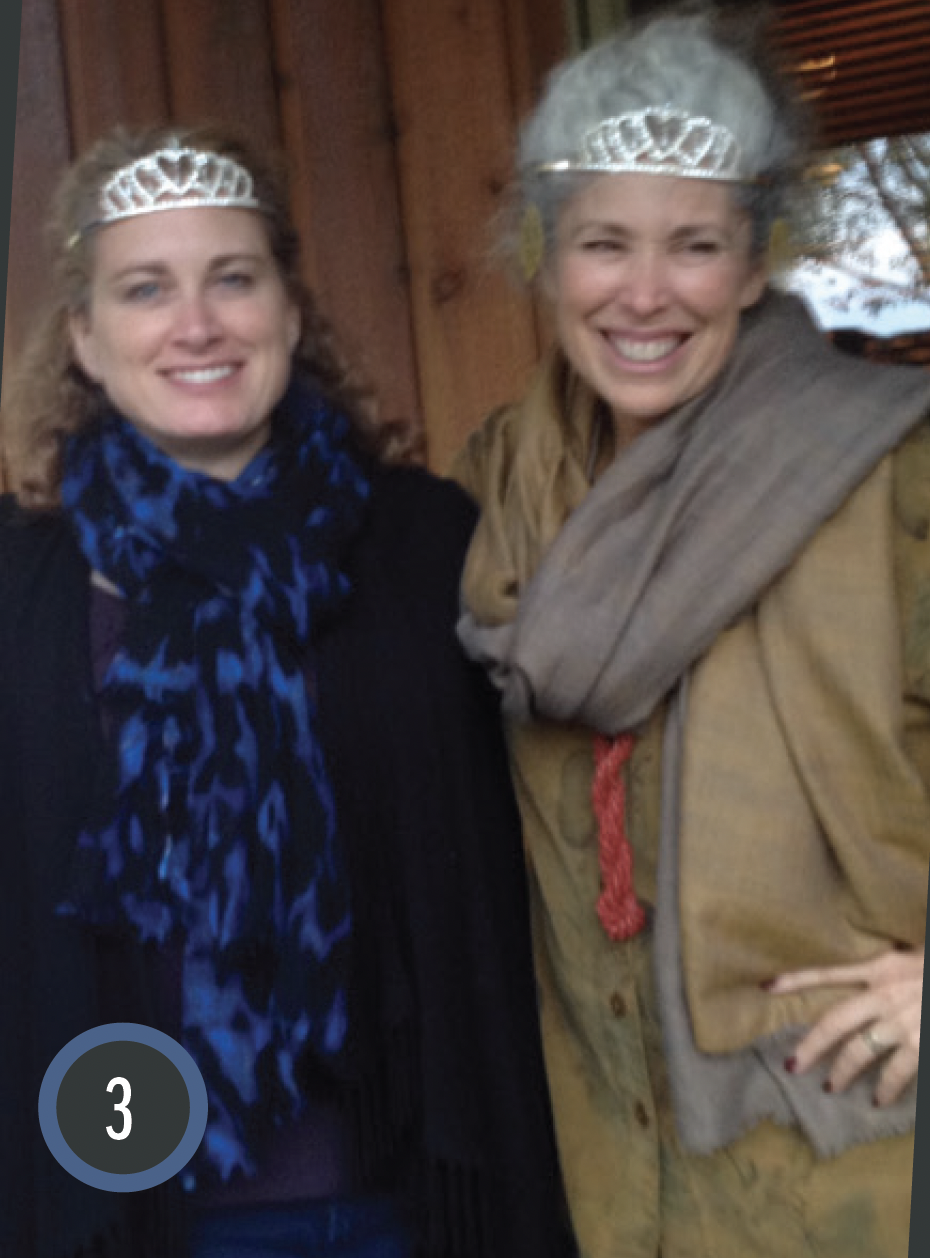
Figure 3. Dr. Arbisser with Cathleen M. McCabe, MD.
IF YOUR MENTEES REMEMBER ONE THING FROM THEIR TIME WITH YOU, WHAT WOULD YOU HOPE THAT IS?
Posting a surgical video for all to see is great, but far more significant is to welcome a trainee or colleague into your OR, your exam lane, and even your home. Offer others a hand up the ladder.
David F. Chang, MD
NUMBER OF YEARS IN PRACTICE: 37
NUMBER OF YEARS IN A MENTORSHIP ROLE: 36
WHO WAS YOUR MENTOR?

When I was a resident at the University of California, San Francisco (UCSF), my most influential mentor was John Stanley, MD, the chief at our Veterans Administration hospital. Either because he was fearless or because he was just curious, John let me attempt phacoemulsification in 1983 when no one else at UCSF was doing it. More importantly, he encouraged me to stick with it despite several demoralizing complications early in my learning curve. That experience of persevering through early failure has given me the confidence to welcome surgical innovation ever since.
Without a fellowship or an academic faculty position, I did not aspire to the podium and instead focused on building my private practice. Out of the blue, Brooks Crawford, MD, our ocular pathologist at UCSF, invited me to be the cataract expert on an eight-person subcommittee that was selecting the papers and posters for the AAO annual meeting. As a mere general ophthalmologist of whom no one had heard, I felt unqualified for such an important position, but Brooks wouldn’t let me say no. I served those first several years while experiencing classic imposter syndrome; I hoped that the other committee members wouldn’t figure out that I was far from a cataract expert. I don’t know what Brooks saw in me, but 9 years later, I became the chair of the AAO Annual Meeting program committee.
In the mid-1990s, I thought I could help others learn the new technique of phaco chop, but I wondered, who would attend an AAO instruction course taught by me? As a long shot, I wrote to Randall J. Olson, MD, who agreed to be my coinstructor for a phaco chop course even though we’d only briefly met once. Launched with his collaboration, the course continues 25 years later. I. Howard Fine, MD, and Samuel Masket, MD, repeatedly went out of their way to encourage and nominate me for several speaking and committee opportunities. Positive feedback from these and other well-respected role models gave me much-needed confidence. (Editor’s note: Drs. Fine and Masket are featured as two of CRST’s Mentors’ Mentors. Read their answers later in this article.)
WHAT IS YOUR MENTORSHIP PHILOSOPHY?
People need encouragement, advice, feedback, and strong role models to reach their full potential. No profession embraces a pay-it-forward tradition more than medicine. Physicians teach each other without expecting compensation from those they help or train. I could never repay my residency instructors for teaching me the skills required to be a successful ophthalmologist, but I can pay that gift forward by teaching others.
These observations hold true of mentoring as well. I was given opportunities even though I did not fit the typical mold. In addition to my involvement with the AAO program committee, I became the first minority ASCRS board member and president. To pay that forward, I try to find opportunities for young, hard-working, talented ophthalmologists, especially those who come from nontraditional backgrounds.
WHAT IS A FAVORITE MEMORY YOU SHARED WITH A MENTEE?
Some of my most rewarding experiences have resulted from collaborations with international ophthalmologists. These individuals may have excellent local mentors, but I can provide a different perspective on clinical research, publishing, and presentations. For example, the Aravind Eye Care System in India has a wealth of talented, highly motivated young ophthalmologists. I first met Haripriya Aravind, MS, in 2003 (Figure 4). She has since risen to the position of chief of Aravind’s largest regional hospital in Chennai. She is a cataract surgery superstar. She often leads Aravind in annual number of publications, and she is an exceptionally strong role model for female ophthalmologists in India and Asia.

Figure 4. Dr. Chang with Haripriya Aravind, MS, in Madurai, India.
Priya and I shared unexpected recognition for our collaboration on a study of moxifloxacin prophylaxis for which she was lead author.1 It won the Journal of Cataract & Refractive Surgery’s 2019 Obstbaum Award for best original article.
IF YOUR MENTEES REMEMBER ONE THING FROM THEIR TIME WITH YOU, WHAT WOULD YOU HOPE THAT IS?
Seek innovative ways to share your knowledge, ideas, and experience even if you aren’t sure that you are the most qualified person to do so. Have the courage to step outside your comfort zone and risk rejection and disagreement. If you have opportunities, make the most of them through hard work, reliability, and punctuality.
1. Haripriya A, Chang DF, Ravindran RD. Endophthalmitis reduction with intracameral moxifloxacin in eyes with and without surgical complications: results from 2 million consecutive cataract surgeries. J Cataract Refract Surg. 2019;45(9):1226-1233.
Eric D. Donnenfeld, MD
NUMBER OF YEARS IN PRACTICE: 35
NUMBER OF YEARS IN A MENTORSHIP ROLE: 30
WHO WAS YOUR MENTOR?

I was fortunate to have many extraordinary mentors, so it is difficult to narrow my selection down to one. Jack Dodick, MD, FACS, is a pioneer in the field of cataract surgery and the chair of the Department of Ophthalmology at the NYU School of Medicine (Figure 5). He was my mentor during my residency and remains a mentor to me today. My fellowship mentor was Peter Laibson, MD, and Henry Perry, MD, has been my practice mentor.

Figure 5. Dr. Donnenfeld with his mentor Jack Dodick, MD, FACS.
WHAT IS YOUR MENTORSHIP PHILOSOPHY?
My philosophy is to lead by example and to position mentees to succeed (Figure 6). I use the Socratic teaching method, and I expect my fellows to commit to a plan and then explain to me why their plan is justified. I believe it is important for mentees to work independently and to gain significant surgical experience. A person can learn most information online or from a book, so there is nothing more irreplaceable for an ophthalmologist than surgical experience.

Figure 6. Dr. Donnenfeld with several of his past mentees.
WHAT IS A FAVORITE MEMORY YOU SHARED WITH A MENTEE?
I share with every mentee I train something I experienced as a second-year resident. I had just completed my first cataract surgery and was feeling euphoric. My attending surgeon knew what I was experiencing and told me, “Eric, remember the feeling you are experiencing right now. Every time you perform surgery in the future, remember again what a privilege it is to be an ophthalmic surgeon. Enjoy every operation as much as you have enjoyed this one. If you do this, you will have a wonderful career.”
IF YOUR MENTEES REMEMBER ONE THING FROM THEIR TIME WITH YOU, WHAT WOULD YOU HOPE THAT IS?
Never allow a patient to feel abandoned because the patient always comes first. Whether you performed the surgery or you are seeing an unhappy patient in consultation, make certain the patient knows that you are committed to doing everything possible to resolve their problem. There is nothing more rewarding than working hard and doing something important that improves people’s lives.
Daniel S. Durrie, MD
NUMBER OF YEARS IN PRACTICE: 46
NUMBER OF YEARS IN A MENTORSHIP ROLE: 40
WHO WAS YOUR MENTOR?

My mentor was Jack Filkins, MD. He founded Midwest Eye Care in Omaha, Nebraska, in 1951, and he was the first ophthalmologist in that state to perform IOL implantation and corneal transplantation. He was also the first ophthalmologist in Nebraska to research and use an excimer laser.
WHAT IS YOUR MENTORSHIP PHILOSOPHY?
Lead by example and make a broad and deep commitment. When you are leading a fellowship program, you must remember the sacrifices fellows and their families are making to learn from you. They deserve all that you can give. Your leadership should extend beyond teaching fellows how you do surgery and treat patients; it should also include how you build a talented and dedicated staff and how you interact with the local and greater ophthalmic community. Mentees should learn how to run a business and even how to honor their commitments to a spouse and family. The more you give as a mentor, the greater the benefits you will receive in return.
WHAT IS A FAVORITE MEMORY YOU SHARED WITH A MENTEE?
That would be our first Durrie Fellow Reunion, which was a surprise to me. After my 10th year of mentorship, all of my previous fellows returned to Kansas to honor and roast me with an amazing weekend of fun and sharing. This has become an annual event, and I can’t wait for the next one.
IF YOUR MENTEES REMEMBER ONE THING FROM THEIR TIME WITH YOU, WHAT WOULD YOU HOPE THAT IS?
I care about them and their families and cherish that we have become lifelong friends (Figure 7).
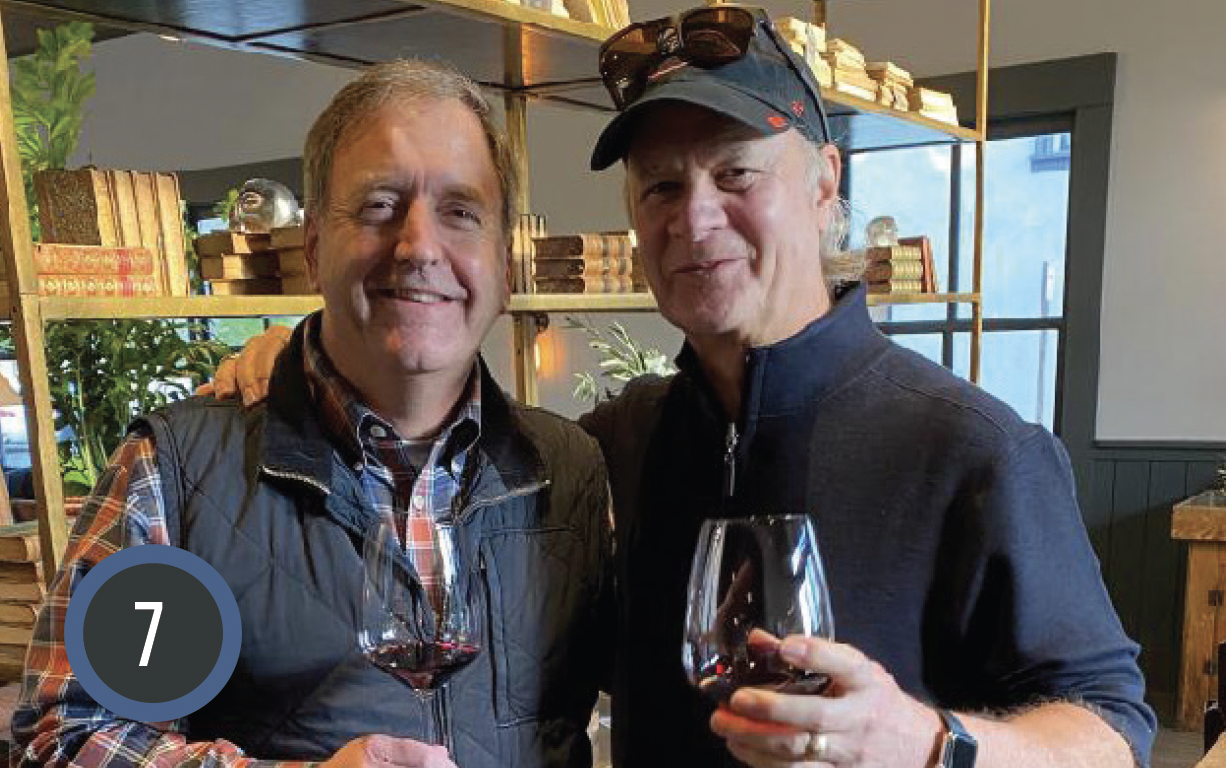
Figure 7. Dr. Durrie with Vance Thompson, MD, FACS, one of Dr. Durrie’s past mentees.
I. Howard Fine, MD
NUMBER OF YEARS IN PRACTICE: 51
NUMBER OF YEARS IN A MENTORSHIP ROLE: 41
WHO WAS YOUR MENTOR?

I had two mentors, Howard Leibowitz, MD, and Ephraim Friedman, MD.
WHAT IS YOUR MENTORSHIP PHILOSOPHY?
Improve patient care by sharing what I have learned with others.
WHAT IS A FAVORITE MEMORY YOU SHARED WITH A MENTEE?
The first time I was able to coach a mentee to achieve a successful outcome in a surgical case that had become complicated.
IF YOUR MENTEES REMEMBER ONE THING FROM THEIR TIME WITH YOU, WHAT WOULD YOU HOPE THAT IS?
I was sincerely trying to help them achieve success (Figure 8).
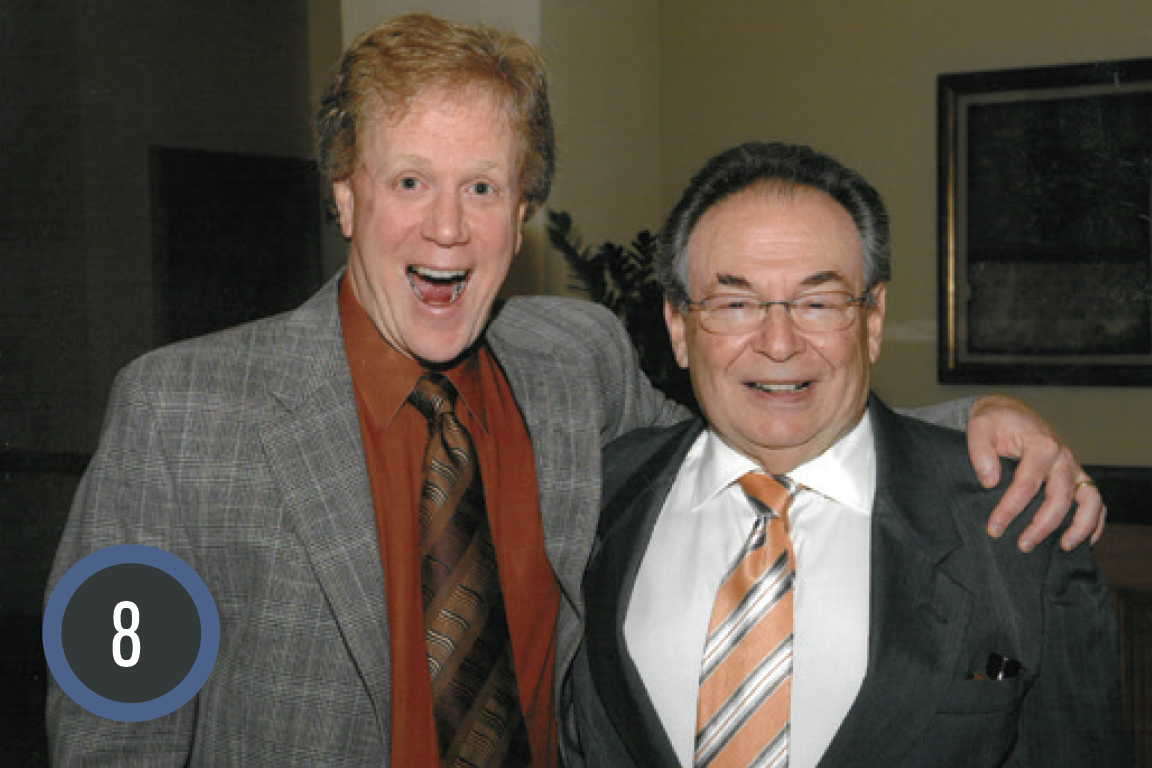
Figure 8. Dr. Fine with practice partner Richard S. Hoffman, MD.
Jack T. Holladay, MD, MSEE, FACS
NUMBER OF YEARS IN PRACTICE: 45
NUMBER OF YEARS IN A MENTORSHIP ROLE: 45
WHO WAS YOUR MENTOR?

My mentors were Whitney Sampson, MD, and Melvin Rubin, MD, both of whom were experts on optics. Daniel S. Durrie, MD, has been a mentee and mentor over the years. We both attended the Houston Basic Science Course in January 1976 as first-year residents. Dr. Sampson was scheduled to teach the optics course that year but had to attend an AAO board meeting that week. He knew of my background in optics and asked me if I would teach the course. I was nervous and spent every night for a week with Dr. Sampson reviewing his notes. (Editor’s note: Dr. Durrie is featured as one of CRST’s Mentors’ Mentors. Read his responses earlier in this article.)
WHAT IS YOUR MENTORSHIP PHILOSOPHY?
There is no such thing as a dumb question. If you truly understand something, you should be able to explain it in simple terms and provide a clear example that the listener can understand.
WHAT IS A FAVORITE MEMORY YOU SHARED WITH A MENTEE?
About 10 years ago, a resident approached me at the Optics Basic Science Course I teach at the AAO Annual Meeting and said, “My dad wanted me to say, ‘Hi.’ He took your course 30 years ago.” Since then, I’ve seen more children of previous students. That speaks to me because I believe that family is everything (Figure 9).

Figure 9. Dr. Holladay with his family, including his six grandchildren.
Over the years, I have been fortunate to teach thousands of residents and practitioners. More importantly, I have made lifelong friends all over the world who have shared their homes, families, and lives with my family (Figure 10). I am blessed and grateful.
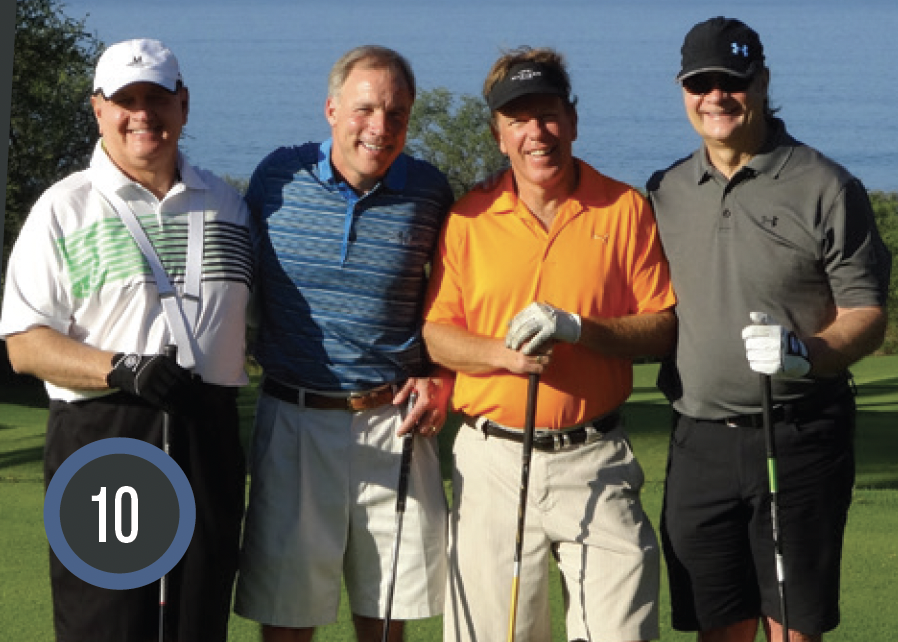
Figure 10. Dr. Holladay golfing in Hawaii in January 2015 with (from left to right) Daniel R. Whipple, MD; Douglas A. Katsev, MD; and Daniel S. Durrie, MD.
IF YOUR MENTEES REMEMBER ONE THING FROM THEIR TIME WITH YOU, WHAT WOULD YOU HOPE THAT IS?
I hope they realize what a joy it is to be an educator. Sharing your knowledge with others and seeing a light bulb turn on when you explain something that has puzzled them is highly rewarding.
Richard L. Lindstrom, MD
NUMBER OF YEARS IN PRACTICE: 44
NUMBER OF YEARS IN A MENTORSHIP ROLE: 44

I have participated in the training of 72 ophthalmology fellows, starting in 1978, and 25 optometry residents, starting in 2000 (Figures 11 and 12). Both programs are still active at Minnesota Eye Consultants. This year, we have two MD fellows and two OD residents.

Figure 11. Dr. Lindstrom in the OR with two fellows preparing a donor for Descemet stripping endothelial keratoplasty.

Figure 12. Dr. Lindstrom with Patricia Sierra, MD, a fellow in the 1990s and current partner at Sacramento Eye Consultants in California, and Mark Hansen, MD, a fellow in the 2010s and current partner at Minnesota Eye Consultants. The photo was taken in Tegucigalpa, Honduras, Dr. Sierra’s birth country.
WHO WAS YOUR MENTOR?
My mentors were Dean Meade Calvert, MD; Professor Donald J. Doughman, MD; and William S. Harris, MD.
WHAT IS YOUR MENTORSHIP PHILOSOPHY?
My philosophy is to lead by example. Patients come first; others, including the mentee, come second; and I come third.
WHAT IS A FAVORITE MEMORY YOU SHARED WITH A MENTEE?
My favorite memories are moments when the patient care, teaching, or innovation of a mentee benefitted patients or colleagues and was catalyzed by what the mentee learned during fellowship or residency training. There are thousands of examples.
IF YOUR MENTEES REMEMBER ONE THING FROM THEIR TIME WITH YOU, WHAT WOULD YOU HOPE THAT IS?
Put patients first, commit to a lifetime of learning, dare to say yes to opportunity, and remember that fortune favors the prepared mind.
Samuel Masket, MD
NUMBER OF YEARS IN PRACTICE: 49
NUMBER OF YEARS IN A MENTORSHIP ROLE: 49
WHO WAS YOUR MENTOR?

Philip Knapp, MD, likely had the greatest influence on me. During my part-time strabismus fellowship at Columbia University’s Harkness Pavilion in 1973, I learned much from him about intellectual honesty and openness with patients and about respecting and valuing the contributions of ancillary staff. I like to think that I maintain a similar sense of professionalism.
Richard P. Kratz, MD, DSci, also had a strong influence on my career. He helped me transition to phacoemulsification around 1980, and I learned a great deal from observing both his movements in the OR and his smooth manner of speaking with patients. Dr. Kratz was efficient in all that he did; it seemed as though the laws of friction and gravity did not apply to him.
WHAT IS YOUR MENTORSHIP PHILOSOPHY?
The chief functions of a mentor are to stimulate the intellectual curiosity of mentees; teach them how to critically assess techniques, technology, and the literature; set an example of professionalism with regard to respecting patients and staff; transfer surgical, cognitive, and behavioral skills, including ergonomics and wellness; and be available when needed the most.
WHAT IS A FAVORITE MEMORY YOU SHARED WITH A MENTEE?
I have developed long-term relationships with many mentees, but the most significant mentor-mentee relationship of my career by far is with Nicole R. Fram, MD. Her surgical talent, intelligence, and zeal to learn quickly caught my attention and inspired me to mentor her closely, including attending every one of her surgeries during her first year at Advanced Vision Care in 2008. It was a mutually beneficial relationship. She became my partner in 2011 (Figure 13), and she has become a world-class surgeon and teacher. Together, we have engaged with and published the works of visiting international research fellows through the Samuel and Barbara Masket Foundation. The foundation now supports a clinical fellowship, and it allows us to care for the underserved while training a new generation of anterior segment surgeons (Figures 14 to 16).
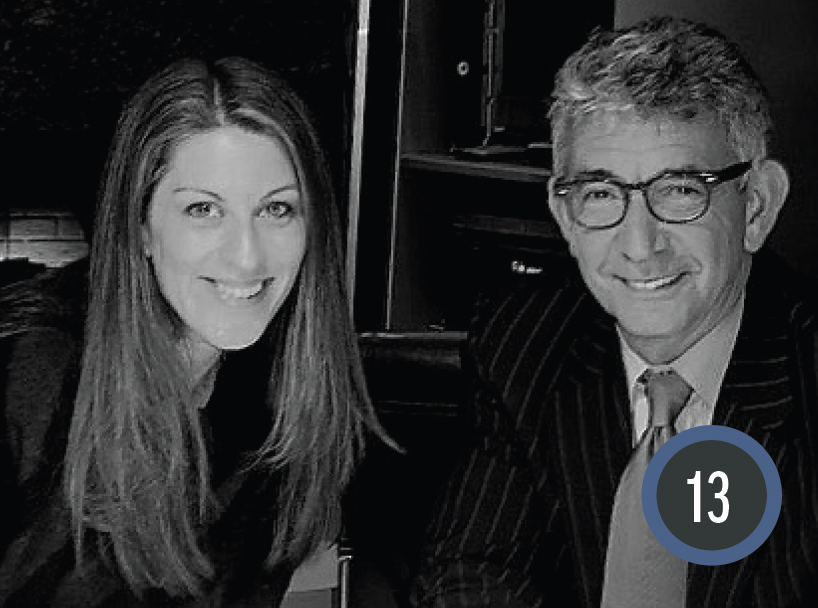
Figure 13. Dr. Masket with Nicole R. Fram, MD, in 2011.

Figure 14. Dr. Masket with international research fellow Basak Bostanci Ceran, MD, of Ankara. Dr. Ceran now practices in Instanbul.
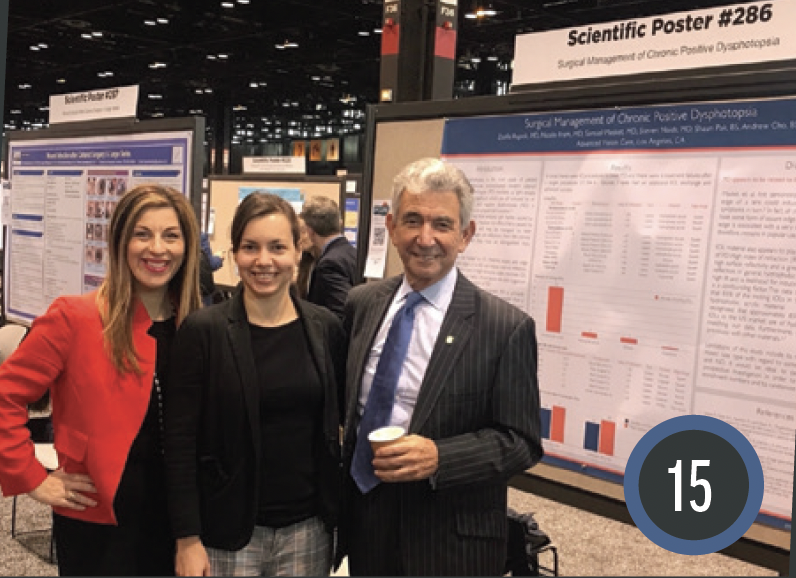
Figure 15. Dr. Masket with Dr. Fram (left) and international research fellow Zsofia Rupnik, MD, of Budapest (center) in front of Dr. Rupnik’s 2018 AAO poster presentation.

Figure 16. Dr. Masket with Nani Jalsingh, OD, after she completed her Optometric Masket Foundation Fellowship in 2021.
IF YOUR MENTEES REMEMBER ONE THING FROM THEIR TIME WITH YOU, WHAT WOULD YOU HOPE THAT IS?
Above all, mentees should remember that it is a privilege to care for patients—not the reverse. If what doctors do is good for patients, then it will also be good for doctors and industry.
Marguerite B. McDonald, MD, FACS
NUMBER OF YEARS IN PRACTICE: 40
Years as a fellowship director: 25
and 15 additional years as a mentor in a less formal role
WHO WAS YOUR MENTOR?

Herbert E. Kaufman, MD, PhD. He was the director of my cornea fellowship at Louisiana State University.
WHAT IS YOUR MENTORSHIP PHILOSOPHY?
It doesn’t matter how much you know; the most important thing to remember is what it was like to be a student (Figures 17 and 18).
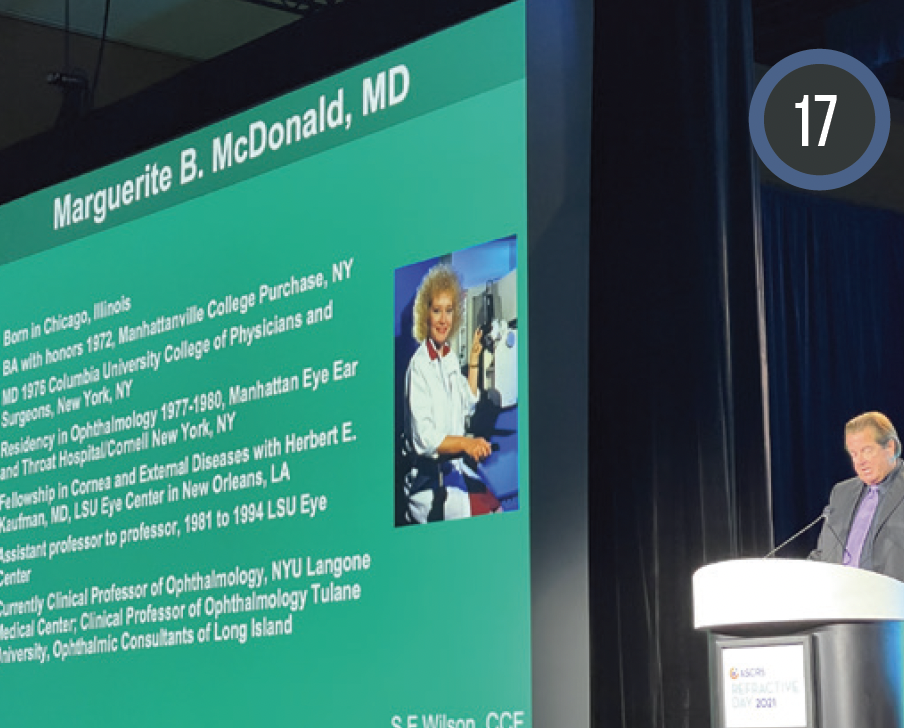
Figure 17. Dr. McDonald’s fellow Steven Wilson, MD, introducing Dr. McDonald before her Steinert Lecture at ASCRS 2021.
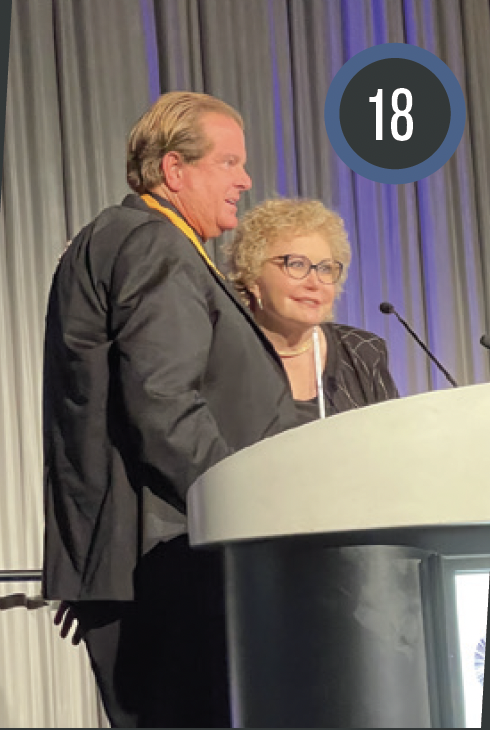
Figure 18. A few months later at the 2021 AAO Annual Meeting in New Orleans, Dr. McDonald introduced Dr. Wilson before his Barraquer Lecture.
WHAT IS A FAVORITE MEMORY YOU SHARED WITH A MENTEE?
Working extra hours with a cornea fellow in a surgical clinical research project, and taking that fellow from being a suboptimal surgeon—who was actually expelled from the OR—to becoming the best of the best.
IF YOUR MENTEES REMEMBER ONE THING FROM THEIR TIME WITH YOU, WHAT WOULD YOU HOPE THAT IS?
One must never be afraid to ask for help in the OR, in the office, or in life.
Robert H. Osher, MD
NUMBER OF YEARS IN PRACTICE: 41
NUMBER OF YEARS IN A MENTORSHIP ROLE: 41
WHO WAS YOUR MENTOR?

I was lucky during my training to work with three incredible mentors. I spent a year with J. Lawton Smith, MD, an amazing neuro-ophthalmologist at Bascom Palmer Eye Institute. He taught me the value of thoroughness, compassion, and humor. When I entered practice, I joined my father, Morris Osher, MD, whose demonstrations of elegant surgery continued my education. I was also deeply impressed by how he treated every patient with kindness and compassion.
My third mentor was Charles D. Kelman, MD. In 1984, after I introduced the first refractive cataract procedure—astigmatic keratotomy combined with phacoemulsification—I was criticized everywhere I went. In 1985, I introduced clear lensectomy for high hyperopia and was ostracized. Had it not been for the encouragement I received from Spencer R. Thornton, MD, FACS; Douglas D. Koch, MD; and Richard L. Lindstrom, MD, I might have thrown in the towel. It was Charlie, however, who took me under his wing and went out of his way to toughen me up. He warned me that anyone who thinks and does things differently is sentenced to a lonely existence. I am so grateful for his advice and for the unrelenting support of a small group of lifelong friends. (Editor’s note: Dr. Lindstrom is featured as one of CRST’s Mentors’ Mentors. Read his answers earlier in this article.)
WHAT IS YOUR MENTORSHIP PHILOSOPHY?
My experiences with the three mentors I mentioned earlier led me to reject a punitive method of teaching in favor of encouraging residents, fellows, and colleagues to question everything we know and challenging them to find a better way. Even if a question or idea makes little sense to me, I try to encourage rather than ridicule the mentee. I have also made a point of supporting younger partners, including Robert J. Cionni, MD (Figure 19), and Michael E. Snyder, MD. When Bob wanted to specialize in zonular cases, I think I was the only surgeon in the United States performing phacoemulsification on loose lenses. I handed my referral practice over to him. When Mike wanted to specialize in iris reconstruction, I had amassed referrals from all over the country because I had published the first case series of prosthetic iris devices. I turned these cases over to Mike. I have never regretted either of these decisions, and I am proud of how far Bob and Mike have advanced our field with their meticulous and innovative surgeries. I have also mentored many international fellows. Two standouts among a dozen Brazilian fellows were Frederico Marques, MD, and Daniela Marques, MD (Figure 20).
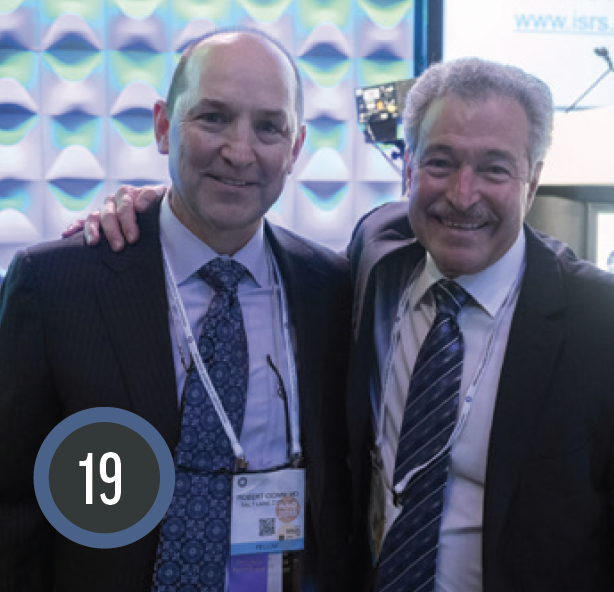
Figure 19. Dr. Osher with Robert J. Cionni, MD.
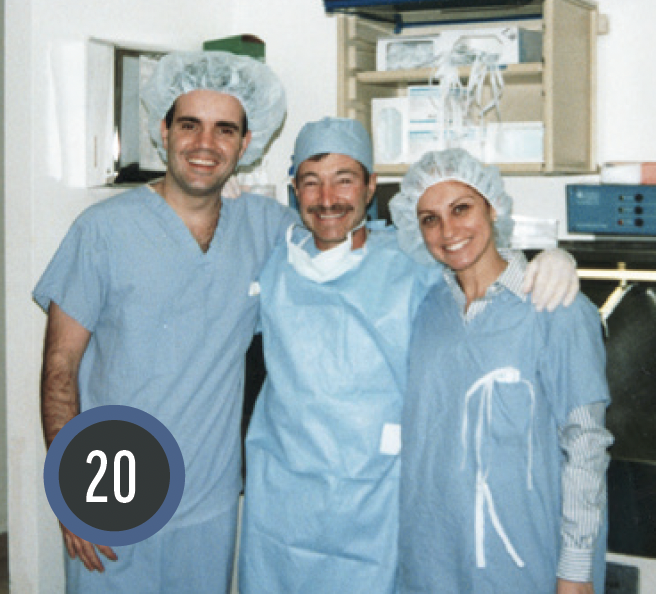
Figure 20. Dr. Osher with Frederico Marques, MD, and Daniela Marques, MD.
WHAT IS A FAVORITE MEMORY YOU SHARED WITH A MENTEE?
I greatly enjoy teaching ophthalmology residents at the University of Cincinnati, especially when we dine together at our monthly evening conferences (Figure 21).
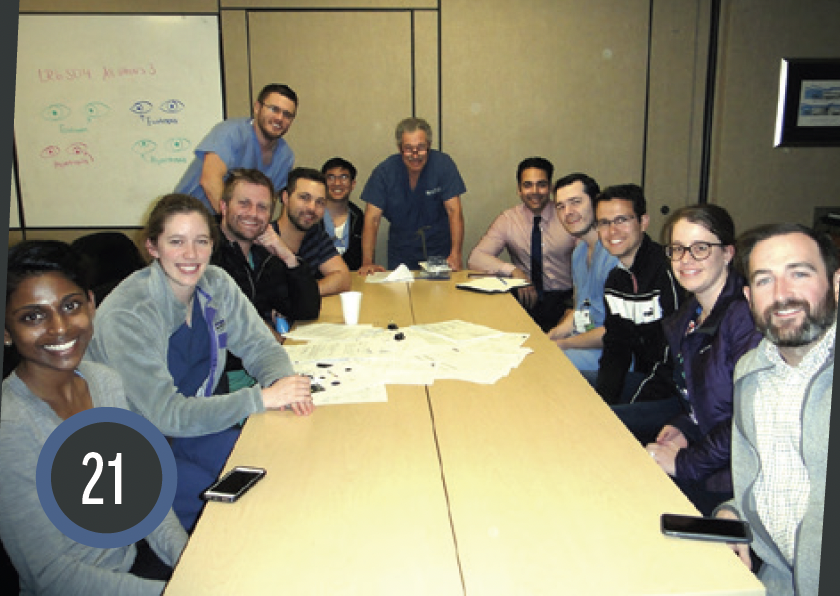
Figure 21. Dr. Osher with ophthalmology residents at the University of Cincinnati, Ohio.
Additionally, it is satisfying to receive letters of thanks from all over the world. I am humbled by how a simple desire to teach has helped many surgeons.
IF YOUR MENTEES REMEMBER ONE THING FROM THEIR TIME WITH YOU, WHAT WOULD YOU HOPE THAT IS?
Teaching has been an important part of my career. For me, this is not just limited to performing cataract surgery; it also includes sharing lessons about the art of medicine, which I share in What I Say,1 and even more important, life’s lessons, which I share in The Real ABCs: Achievement, Balance, and Contentment.2 I hope my mentees appreciate my love for our profession and my passion for teaching. When I was young, I would hop on a plane and fly to other parts of the world just to teach for a couple of hours. Now that I’m older and do not travel as frequently, I hope my mentees are enjoying the other ways in which I continue teaching. For example, the Video Journal of Cataract, Refractive, and Glaucoma Surgery is an educational resource that is provided for free to all ophthalmologists. More recently, I founded and organized Cataract Surgery: Telling It Like It Is! This meeting is geared toward young ophthalmologists. These teaching opportunities continue to remain high priorities in my life, and I hope to serve as a mentor for years to come.
1. Osher RH, Parker JS. What I Say: Conversations That Improve the Physician-Patient Relationship. Slack; 2019.
2. Osher RH. The Real ABCs: Achievement, Balance, and Contentment. Slack; 2009.
Sheri Rowen, MD, FACS
NUMBER OF YEARS IN PRACTICE: 31
NUMBER OF YEARS IN A MENTORSHIP ROLE: 31
WHO WAS YOUR MENTOR?

Leeds Katzen, MD; Manus C. Kraff, MD; Charles Williamson, MD; I. Howard Fine, MD; William F. Maloney, MD; and Bert M. Glasser, MD, were my mentors. (Editor’s note: Dr. Fine is featured as one of CRST’s Mentors’ Mentors. Read his answers later in this article.)
WHAT IS YOUR MENTORSHIP PHILOSOPHY?
I was fortunate to meet some of the greats in the field early in my career. I was the only woman speaking on the cataract podium, and the experience was quite scary. I was introduced to Dr. Kraff, who included me in an AAO course on complex cataract surgery. I was the youngest and most inexperienced of the people involved, but I learned from my fellow faculty members how to present cases, give talks, and become a better cataract surgeon. We offered this course for 20 years. The experience taught me the importance of camaraderie in education, and I share this with future generations.
After many years of teaching residents and helping colleagues, I set up a continuing, sustainable mentorship program through the Cedars/Aspens Society. I wanted to help ophthalmologists early in their careers develop their speaking skills and learn how to get started in practice, set up studies, and discuss contracts, among other things, in a safe and caring environment. I feel connected to the next generation of ophthalmologists and am grateful for this opportunity to contribute.
WHAT IS A FAVORITE MEMORY YOU SHARED WITH A MENTEE?
I have so many great memories. One that stands out was mentoring Blake K. Williamson, MD, MPH, MS, in a surgical skills training program while he was a resident and figuring out that he was the son of Chuck, who was my mentor. That was cool.
Another favorite moment occurred after a speaker training course. My fellow faculty members and I sat in the front rows cheering on our mentees, who were delivering their first presentations at a major conference and were more comfortable and polished in their public speaking.
IF YOUR MENTEES REMEMBER ONE THING FROM THEIR TIME WITH YOU, WHAT WOULD YOU HOPE THAT IS?
Assist the next generation. Be kind and unselfish. Sharing your knowledge with young ophthalmologists is not only necessary; it’s also fun (Figures 22 and 23).

Figure 22. Dr. Rowen with mentees and colleagues at a past American-European Congress of Ophthalmic Surgery annual meeting in Deer Valley, Utah.
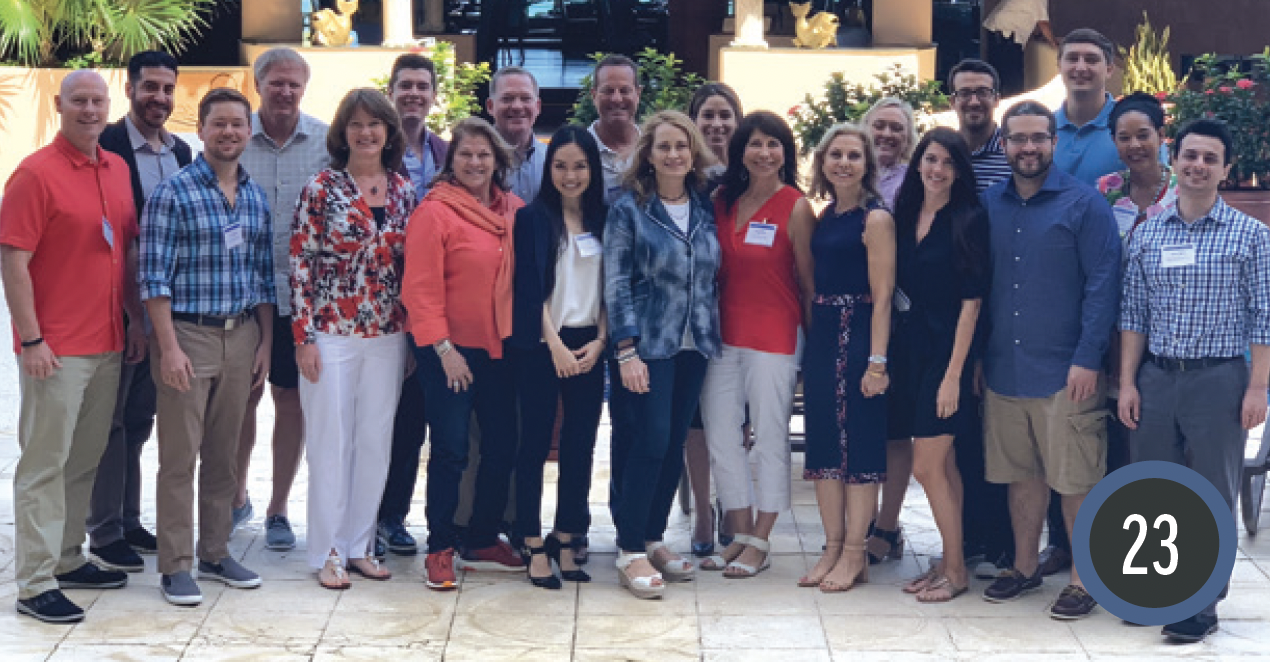
Figure 23. Dr. Rowen with mentees and colleagues at a past Caribbean Eye meeting.
Stephen G. Slade, MD, FACS
NUMBER OF YEARS IN PRACTICE: 31
NUMBER OF YEARS IN A MENTORSHIP ROLE: 31
I stopped taking fellows 6 years ago but made an exception a few years ago after meeting Bennett Walton, MD, MBA. Bennett is exceptional.
WHO WAS YOUR MENTOR?

I have many, including Herbert E. Kaufman, MD, PhD; Douglas D. Koch, MD; Richard L. Lindstrom, MD; I. Howard Fine, MD; and Andy Corley. (Editor’s note: Drs. Lindstrom and Fine are featured as two of CRST’s Mentors’ Mentors. Read their answers earlier in this article.)
WHAT IS YOUR MENTORSHIP PHILOSOPHY?
My take on mentorship has evolved over the years. I used to think of mentorship as the traditional older teacher/younger student relationship. I did two fellowships and have had many wonderful fellows myself. As I learned more from my own fellows, I started to realize that we are all mentors and we are all fellows. Mentorship is fluid and flows in many ways. The individuals in Figure 24 sum up mentorship for me. John F. Doane, MD, was one of my best fellows ever. Steven J. Dell, MD, was never my fellow, but I feel like we are on a long fellowship together. Andy Corley has always been my non-MD mentor. I talk to all three of these individuals constantly. We share experiences, ask lots of questions, and laugh. We teach each other what is important and help each other no matter what. I cannot imagine not knowing the three of them.

Figure 24. Dr. Slade with (from left to right) Steven J. Dell, MD; John F. Doane, MD; and Andy Corley.
WHAT IS A FAVORITE MEMORY YOU SHARED WITH A MENTEE?
In 1996, our practice moved to a new office, and we had to get the laser room ready for the first excimer laser to be installed. We painted, sealed doors, and checked the airflow— all on the weekends and after hours. No one really knew how to set up a laser room, but we did the best we could. John, who was my fellow at the time, was at the practice constantly. He painted walls, scrubbed floors, and installed doors and insulation. I never asked him to—it certainly was not in the job description—but he was there. He brought his power tools from home and was simply a machine.
IF YOUR MENTEES REMEMBER ONE THING FROM THEIR TIME WITH YOU, WHAT WOULD YOU HOPE THAT IS?
Patients come first. Then, enjoy yourself. We are all blessed beyond belief to be in ophthalmology, and the years go by too quickly.




